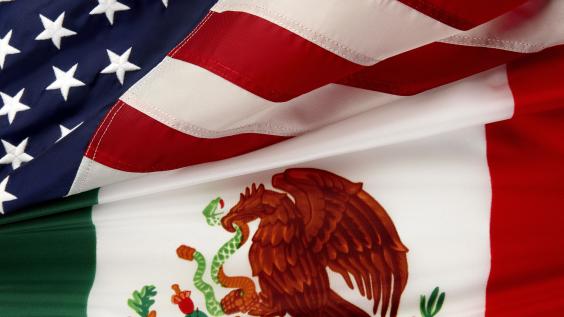Avoiding Conflict? United States and Mexico Future Security and Defense Scenarios

Table of Contents
Author(s)
To access the full paper, download the PDF on the left-hand sidebar.
Introduction
The United States and Mexico have a complicated past, a turbulent present, and an uncertain future. Both are facing challenges from issues such as trade, migration, border security, illegal trafficking in persons, drugs, and arms, and now the Covid-19 pandemic. In March 2020, the Trump administration implemented a mandatory expulsion program for migrants entering the country illegally to “protect the public health” of Americans. The expulsion only sent them to Mexico, not their country of origin, exacerbating the public health crisis for Mexicans and others in migrant shelters south of the border. This policy and the other official responses to the Covid-19 pandemic in each country are reshaping public debate and policy priorities in world affairs and the bilateral relationship between the U.S. and Mexico.
After the terrorist attacks of 9/11 in the United States and the rise of powerful drug trafficking organizations in Mexico in the late 2000s, both countries appeared to be moving toward a convergence of security interests, creating new institutional processes for cooperation within a regional framework that included Canada. The United States’ primary focus was on the threat of terrorism, while Mexico was focused on organized crime and violence. Due to a shared border and the concern over the nexus of crime, terrorism, and drugs, both countries had shared interests and therefore developed a number of programs and institutional processes to increase security cooperation for both national security and intelligence (with an emphasis on public safety) and national defense.
With the election of Donald Trump as president of the United States in 2016, the concurrent rise of nationalism in Mexico, and the election of Andrés Manual López Obrador as president of Mexico in 2018, identity politics appear to have “trumped” other variables, evincing a divergence of views on defense and national security issues. Both countries now view each other as a threat, with Trump focused on “building a wall” to keep out Mexican migrants who he views as “rapists” and “murderers,” threatening U.S. national security. Mexicans have expressed concerns over their country’s defenses due to Trump’s threats to send the U.S. military into Mexico to take care of the “bad hombres” that the Mexican military is “too afraid” to confront. Trump’s decision to dispatch up to 4,000 U.S. National Guard forces to the border in April 2018 and another 6,000 active-duty service members in November 2018 did not help that perception.



